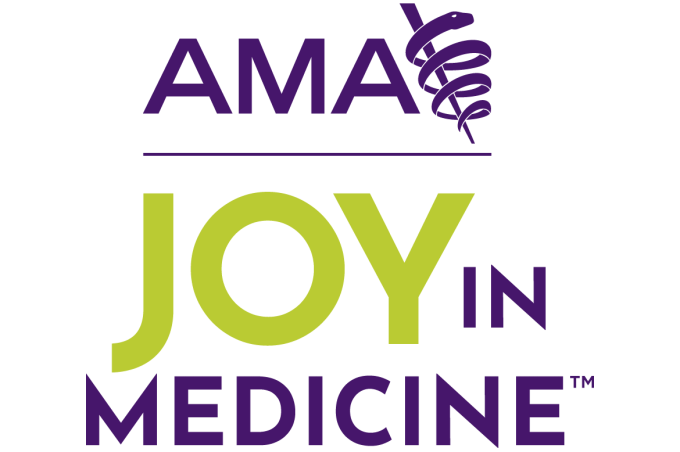Physicians are trained to focus on their patients, sometimes even to their own detriment. That is why The Permanente Medical Group is spearheading a new effort to foster self-compassion as a way of improving physicians’ personal well-being and helping to mitigate burnout that is driven by system factors such as excessive clerical burdens and a lack of meaningful time with patients.
When it comes to work to improve well-being, hearing physicians “say words like ‘transformative’ and ‘life-changing’ … just feed my soul. Because when you're speaking about physicians, that's saying a lot,” Rae Oser, PhD, a psychologist and director of physician wellness and leadership at The Permanente Medical Group, said during a session at the most recent American Conference on Physician Health.
The Permanente Medical Group is a member of the AMA Health System Program, which provides enterprise solutions to equip leadership, physicians and care teams with resources to help drive the future of medicine.
There are 4.6 million Kaiser Permanente members and about 10,000 physicians in The Permanente Medical Group, which focuses on enhancing the joy and meaning in medicine as the key to its broader performance strategies. Personal well-being serves as one of the three pieces of their strategic framework for achieving and maintaining professional fulfilment.
The “Self-Compassion in Action” class, offered in a partnership with the Center for Mindful Self-Compassion, is a six-week-long virtual program available to The Permanente Medical Group physicians in three series per year. The components of self-compassion as taught in the class, Oser said, are treating yourself as you would your beloved partner, recognizing common humanity—the sense of not being alone—and practicing mindfulness, which allows you to go into a situation being fully present.
While systemic changes are required to turn the tide of physician burnout in the United States, efforts at the individual level can also help improve doctors’ well-being.
Read about how The Permanente Medical Group’s strategic framework helps physicians spend more time with their patients. Also learn how the medical group is taking on the overloaded inbox.
Reducing physician burnout is a critical component of the AMA Recovery Plan for America’s Physicians.
Far too many American physicians experience burnout. That's why the AMA develops resources that prioritize well-being and highlight workflow changes so physicians can focus on what matters—patient care.
Finding and removing stumbling blocks
Oser said there are several barriers to self-compassion, specifically, and well-being courses in general. These include time constraints, the stigma related to self-care and low self-valuation, which is being able to put yourself first.
“Our physicians … are incredibly mission-driven,” Oser said. “So, there is never a time when there is nothing better to do.”
Some of the strategies that have been used to overcome these challenges include holding the classes virtually to reduce the barrier to participation, selecting a morning time slot that was part of clinic time and getting leaders’ support.
One key to making the classes worth physicians’ time, said Oser, was having doctors develop and teach the material.
The instructors are “practicing physicians, so they can speak to what it's like to even carve out time to attend this class,” she said. “And that was really important for us—to have the sense that it was going to be valuable, that this is normal, that there are wonderful physicians out there who are doing the same thing that you're doing and are practicing self-compassion.”
Doctors join, stay and pass the word
About 145 physicians participated in the first year of the program throughout the three six-week sessions available, which was a good start given the limited initial effort to make doctors aware of the offering. But even more satisfying, Oser said, was the feedback and the retention rate.
More than three-fourths of those who started the program were still in by week six, she said. And on a scale of one to five, the program had a score of 4.9 for physicians saying they would recommend it to a colleague and a 4.5 score for physicians saying they found the program valuable.
There is “nothing better than for someone to take the course and then to say to a colleague, ‘Hey, this would be really good for you as well.’”
The program has two main next steps, said Oser. The first would be to broaden the marketing and scale the program to more physicians. The Permanente Medical Group is also seeking ways to provide leadership-specific offerings for the 1,500 to 2,000 division chiefs within the medical group.
To learn more about group coaching to reduce burnout and improve self-compassion, listen to this “AMA STEPS Forward® Podcast” episode.
The next American Conference on Physician Health, a biennial conference sponsored by Stanford Medicine, the AMA and Mayo Clinic, is Sept. 13-15, 2025 in Boston.




